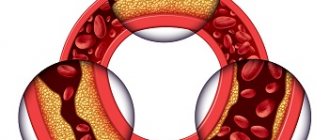In modern society, the problem of constipation is considered very indecent and is rarely discussed. Poor nutrition, emotional stress, lack of physical activity - all this can trigger the development of constipation. What to do in such a situation? Traditional medicine has a huge list of remedies that effectively solve this problem, but flaxseed oil is considered one of the best. For constipation, how to take this substance, what is its healing effect on the body - you will find all this in our article.
What is flaxseed oil and its properties
Medicinal oil is obtained from flaxseed oil. The seed of this plant is crushed and pressed using a special press. From the raw materials, unrefined oil and cake are obtained, enriched with coarse dietary fiber (fiber). Fiber has a laxative effect on the body.
The method described above is called “cold” pressing and it began to be used relatively recently. Previously, the technology involved roasting the seeds before the press, as this ensured the volume of oil produced. But frying has one significant drawback - it negatively affects the nutritional and medicinal value of the oil, so they decided to abandon it.
A good flax seed oil should be slightly bitter and its color should range between yellow and brown with a slight green tint.
Flax seed
Note! When exposed to open air, the oil gradually oxidizes. Because of this, the product must be stored in closed glass containers.
Healing properties of flax
Useful properties of the oil:
- Improves the functioning of the digestive system,
- Breaks down and helps remove fat accumulations from the body,
- Facilitates the process of defecation in the development of constipation in adults and small patients.
Linseed oil
What foods weaken
Dietary nutrition for constipation, first of all, involves the inclusion in the diet of foods with a laxative effect - they contribute to regular bowel movements2.
Food components that make stool easier
Plant fiber.
It is practically not digested in the intestines, while loosening feces, increasing their volume, mechanically stimulating the motor activity of the large intestine, thereby making defecation more frequent and easier2.
In addition, coarse plant fibers are a probiotic: they are used as a source of nutrition for “beneficial” intestinal microflora (bifidobacteria and lactobacilli) and contribute to its improvement3. Given that the composition of the intestinal microflora influences intestinal motility5, increasing the proportion of fiber in the diet can help solve constipation problems.
“Laxative” foods that contain a lot of coarse fibers2,3
- Vegetables and fruits, raw, boiled and baked. Among vegetables, greens and cabbage, cucumbers, carrots and beets, pumpkin, zucchini and onions are especially useful, and among fruits - apples, pears, plums and bananas.
- Bread and other products made from wholemeal flour, that is, made from unrefined cereal seeds. It is in the shell of cereals that fiber is contained.
- “Coarse” crumbly porridges made from pearl barley and buckwheat, oats (not to be confused with oatmeal), millet, bulgur, quinoa, etc.
- Meat containing connective tissue fibers and skin. Animal connective tissue, of course, does not belong to plant fiber, but it is also difficult to digest.
- Dried fruits: prunes and dried apricots.
Important! It should be borne in mind that coarse fiber is contraindicated in acute inflammatory processes in the stomach and intestines, and also in spastic constipation with increased intestinal motility 2.3. Therefore, consultation with a doctor in case of recurring stool disorders is mandatory.
Sugary substances
Sugary substances and products containing them (beet and cane sugar, honey, whole milk, jam, sweet fruits and juices from them) also have a laxative effect2. The carbohydrates they contain, due to their high molecular weight, attract large amounts of fluid into the intestine2,3. In addition, under the influence of intestinal microflora they undergo fermentation, the products of which increase the secretion of water into the intestinal lumen. Due to this, the stool becomes more moist and soft2,3. Of course, you shouldn’t overindulge in sweets, but you don’t need to give them up due to their beneficial effect on the gastrointestinal tract.
Organic acids
Organic acids increase the secretion of fluid into the intestines, increase the moisture content in stool, and enhance peristalsis2,3.
What “sour” foods make you weak?
First of all, this3:
- kefir, and not fresh, but one or two days old, containing a sufficient amount of lactic acid, yogurt, buttermilk, whey, kumiss and other low-fat fermented milk products;
- sour fruit and vegetable juices (tomato, rhubarb);
- Fruit drinks2.
Important! Eating foods containing organic acids can lead to increased stomach acidity, which is dangerous for hyperacid gastritis (with high acidity), gastric and duodenal ulcers.
Salt
Herring, salted vegetables, corned beef, and caviar contain large amounts of sodium chloride and other salts. Salt attracts fluid to the intestines and helps liquefy its contents1,2.
Salt-containing products include mineral waters with a high salt content: for example, hydrocarbonate-sulfate waters containing up to 8 g of inorganic substances per 1 liter1.
Fat
Many foods contain fat, which makes stool easier to move and defecate.
Fatty “laxative” products include:
- butter, cream, sour cream with a fat content of 27% or higher;
- vegetable oils: sunflower, olive, corn, rapeseed;
- fish oil and fatty fish;
- lard, fatty pork, lamb and other types of meat;
- mayonnaise, fatty sauces and gravies2,3.
Cold dishes
Irritation of the “cold” thermoreceptors of the oral cavity leads to a reflex contraction of the muscles of the gastrointestinal tract and increased peristalsis2.
This is how they work:
- cold drinks,
- cold soups (beetroot soup and okroshka),
- ice cream and other cold desserts.
Carbonic acid (carbon dioxide)
Plain carbonated and mineral water, kumiss contain carbonic acid. In a bound state, it quickly breaks down into water and carbon dioxide, forming many bubbles that stimulate peristalsis by irritating the receptors and increasing the volume of intestinal contents2. Caution is required when consuming soda in case of inflammatory diseases of the stomach and intestines2.
Important!
- Diet therapy for constipation involves not only choosing “laxative” products, but also drinking enough fluid (2-2.5 liters per day)3.
- The diet must be balanced in composition and caloric content2.
- Meals are frequent, at least 4 times a day2, and breakfast should be denser than other meals2,3.
- In the morning on an empty stomach, it is useful to drink a glass of clean, cool drinking or mineral water, freshly squeezed fruit and vegetable juice.
- As a second breakfast, you should eat fresh vegetables and fruits; before bed, kefir, yogurt or other low-fat fermented milk drink.
- For constipation associated with a sedentary lifestyle, therapeutic exercises, swimming, massage and self-massage of the anterior abdominal wall are recommended.
Up to contents
How to use flaxseed oil for constipation
The oil has the best healing effect on the intestines during sleep. A person should drink the oil on an empty stomach and half an hour before the main meal. In order for the product to be more beneficial, adults should refrain from drinking hot drinks before breakfast.
How to drink ground flax oil
- The easiest way to take the product is to use it as a dietary supplement to your daily diet (soups, porridges from various cereals, meat and fish dishes). In this case, one condition must be observed - the oil is added immediately before eating the dish.
- If constipation is chronic, the right solution would be to take a teaspoon of oil on an empty stomach. This product has good compatibility with honey, natural yogurt and kefir. Therefore, to treat an illness, you can use the following recipe: mix the main ingredient with one of the additional ones in a 1:1 ratio, mix well and put in the refrigerator. Take the prepared mixture in the morning half an hour before breakfast and before bed.
- A mixture of flaxseed oil and milk will help in treating constipation. The drink should be consumed in the following dosage: add a teaspoon of butter to 150 milliliters of milk, stir and cool. The product should be taken in the evening after meals.
- An infusion of mint, licorice and thyme based on flaxseed oil has a good laxative effect.
The product can be used as an enema solution. The drug will help relieve constipation in a newborn child, an older child or an elderly patient.
It is allowed to brew flax seed. This brew will effectively cleanse the body of harmful accumulations and prevent the development of constipation.
Today you can find flaxseed oil in capsules in pharmacies. In this form, the product also effectively eliminates causes that can cause constipation. The advisability of taking the drug and the duration of the treatment course should be determined only by a qualified doctor, since in addition to its benefits, it can cause harm to the patient.
Read also: How to use oak bark for diarrhea, method of use, contraindications
Flax oil in capsules
Contraindications for use
Before you start drinking oil for medicinal purposes against constipation, you need to find out the cause of constipation and consult a doctor, since in some cases the remedy can do more harm than good. For example, the product enhances the synthesis of gastric secretions, so if the acidity in the stomach is increased, then it should not be consumed in its pure form.
Since flaxseed oil also has a choleretic effect, people with biliary dyskinesia or those suffering from cholelithiasis should not drink it without consulting a specialist. Flaxseed oil is contraindicated for cholecystitis, polyps on the uterus or appendages, chronic pancreatitis, hepatitis, and individual intolerance.
Also, the use of the drug is limited during pregnancy and lactation. Before starting use, a woman should consult a doctor, since the product increases the tone of the uterus, which may be undesirable during pregnancy. On the other hand, the correct amount to take will eliminate the need to take synthetic laxatives.
Babies are prone to allergic reactions, so it is best to avoid potential allergens while breastfeeding.
Detoxification and holistic wellness
Flaxseed oil has become famous as a means of “burning” excess weight.
It is not for nothing that flaxseed oil has become famous as a means of “burning” excess weight. It’s easy to guess why, because the active substances contained in the product accelerate the process of removing harmful waste from the body and toxins accumulated in it.
Saturating the body with beneficial amino acids and minerals, without stress to the digestive and nervous systems, and without harm to well-being, flaxseed oil will begin to rid you of all harmful accumulations from the first day of use.
Main Product Features
Often people are distrustful of the benefits of oils for weight loss, and associate them with something necessarily fatty and harmful. This is a very big misconception.
Although there is no guarantee that the body will instantly respond to taking flaxseed oil, this product is a storehouse of minerals, vitamins and amino acids.
Proof of this can be numerous studies by scientists who have confirmed that consuming flaxseed oil is a direct path to rejuvenation of the body.
Vitamins of group “A” contained in flax seeds are the best companions of female beauty, making hair, eyebrows and eyelashes velvety, nails strong, and improving skin tone. Vitamin “F” will transform and give elasticity to your skin, improve the regeneration of its cells.
A few tablespoons of flaxseed oil can satisfy an adult’s daily requirement of vitamins “E” and “B”. Potassium, which flax is so rich in, will improve the functioning of the cardiovascular system, increase brain activity and prevent the occurrence of edema.
Signs and symptoms of constipation
- abdominal pain, often bursting, aching, sometimes colicky
- bloating
- change in stool shape and consistency
- excessive flatulence
- unpleasant odor of gas and stool
- there may be pain when defecating
- straining during bowel movements
- there may be blood in the stool - on the surface of the stool or in the form of traces on a napkin (indicative of an anal fissure)
If constipation is not eliminated and bowel movement is not established, there is a risk of coprostasis (formation of fecal stones) and fecal intoxication:
- loss of appetite
- lack of energy
- general malaise
- depression, irritability
- nausea, vomiting
- skin symptoms - dryness, rash, peeling
- fecal incontinence, spotting stool
- urinary retention and incontinence due to pressure from the overfilled intestine on the bladder
- bleeding from fissures, hemorrhoids
Diet Tips
Flaxseed can be consumed ground, in oil form, or in capsules.
It is also found in ready-to-eat foods such as muffins and other baked goods, pasta, snack bars and alternative milks.
Ground flaxseed can be added to:
- breakfast cereals,
- smoothie,
- soups and stews,
- salads and sandwiches,
- yoghurts.
You can also add a spoonful of flaxseed to the muffin mixture or use it to coat chicken instead of breadcrumbs.
However, too much flaxseed can give the food a bitter taste, which some people may not like. One solution is to start with a small amount and gradually add to taste.
Types of constipation
Depending on the duration and severity, children are distinguished between chronic and acute constipation. Acute constipation is said to occur when there is no bowel movement for several days in a row.
According to the stages and causes of defecation delay, they are divided into several types:
- Primary – a consequence of congenital or acquired pathology, disruption of innervation or abnormalities in the structure of the intestine. Even a one-month-old baby can experience such constipation;
- Secondary - occurs due to injury, illness, or as a side effect of any medication.
- Idiopathic - a consequence of impaired intestinal motility for unknown reasons.
According to pathogenesis, the following varieties are distinguished:
- Nutritional – a consequence of a lack of fluid in the body, dietary fiber and a decrease in food intake in general;
- Mechanical - arise due to a narrowing of the intestinal lumen;
- Dyskinetic - a consequence of disturbances in the functioning of the digestive organs and intestinal innervation.
According to the clinical picture, functional constipation in children is divided based on the tone of the intestinal walls:
- Atonic (with reduced tone). Peristalsis is sluggish, the movement of feces is slow, which is why defecation is delayed.
- Spastic - occur against the background of heaviness, bloating, flatulence, intestinal colic. A small amount of feces comes out. Constant spastic constipation occurs in a child due to intestinal spasms, due to which feces accumulate and move with difficulty.











